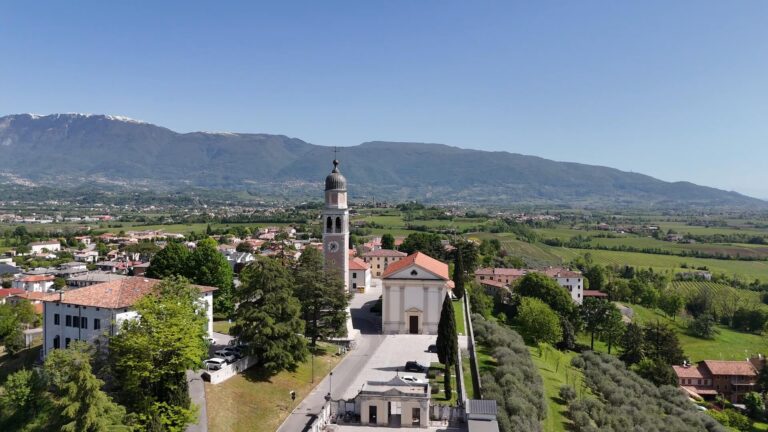ARTISTS’ ROADS
LE VIE DEGLI ARTISTI
watch the videos at the bottom of the page!
Colle Umberto: The Bell Tower That Holds a Story
Since 2019, this landscape has been recognised as a World Heritage Site. UNESCO has certified its uniqueness.
The mosaic-like scenery, the heroic vineyards along the hogback ridges, and the grass-covered terraces. These are the distinctive features found in the core zone.
But it is the interplay between environment, history, and society that makes the entire area truly unique.
This is a landscape shaped by the extraordinary forces of nature and by the unshakable resolve of those who carved out fields for cultivation and created traces of beauty.
If we let our gaze wander a full 360 degrees, we see roads, fields, woods, and villages. And we recognise them by their bell towers.
Some resemble battlemented towers. Others echo Austro-Hungarian architecture. Some are astonishingly tall and slender.
Like great pins in a vast embroidered fabric, gently laid down. They give meaning to the hills. They recount history and their own histories. They define the land.
The bell tower of Colle Umberto stands atop a ridge so distinctive that the largest settlement built upon it was simply named Colle.
From its belfry, we search for the ten hamlets that form the municipality, the patrician villas that tell of its agricultural prosperity, and we imagine the scale of the ancient Abbey of San Pietro, founded nearly a thousand years ago, of which only the present-day town hall remains.
The construction of the bell tower is tied to that of the adjacent church, dedicated to the apostle Thomas, and documented as far back as 1225.
In 1804, a new archpriest arrived in Colle, Monsignor Giampaolo Malanotti. A man of learning, both energetic and courageous.
The church at the time was too small and lacking in dignity. A widespread fundraising effort began at once. One year later, the first stone was laid. By 1809, the construction was completed.
But the new church required a proper bell tower.
What would come to be called the Malanotti Tower, because it was paid for personally by the archpriest, was begun in 1810, designed by the architect and painter Sebastiano De Boni from Feltre, the very same who designed the church.
But nature would soon unleash its destructive power. In 1812, an earthquake damaged the church.
And in 1815, disaster struck again. The bell tower, virtually completed, suddenly collapsed.
A structural failure that also destroyed the old Abbey Church of San Pietro, which still stood slightly higher up the slope.
Yet the people of Colle, led by their archpriest, did not lose heart. Between 1816 and 1821, the bell tower was rebuilt. And in 1914, the current dome was added, with lead sheeting and a crowning sphere, giving the whole structure greater height.
On the belfry, bullet holes remain. The bells were later recast after being seized by the Austro-Hungarians. The story of the Great War passed through here.
Look closely at the belfry. Its elegant double-arched windows. The projecting pilasters The alternating triglyphs. The shaped balusters and the mouldings and keystones. All are features typical of neoclassicism.
Inside, you can still admire the original wooden staircase leading up to the belfry. Here, an inscription records the works, and reminds us that in 1902, while the people of Colle were reinforcing the base of the tower, the Campanile of Saint Mark collapsed in Venice.
MORE EXPERIENCES!
Monasteri e conventi disegnano il territorio:
- L’abbazia cistercense di Follina
- L’ex convento carmelitano a Serravalle
- L’ex convento francescano a Conegliano
- L’abbazia benedettina di Vidor
MULTIMEDIAL MAP: “ARTISTS’ ROADS – LE VIE DEGLI ARTISTI- EN”!

